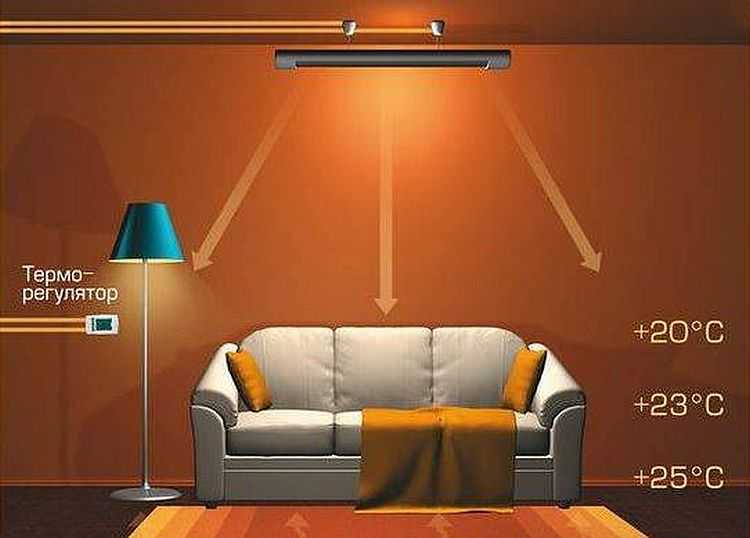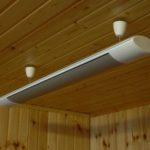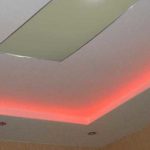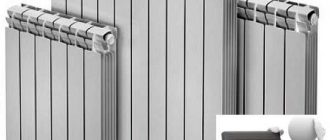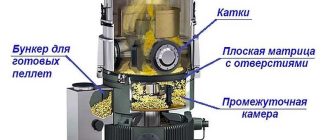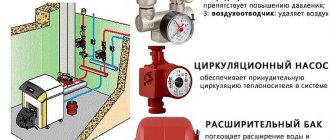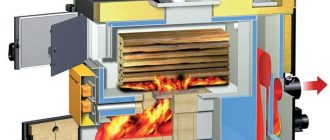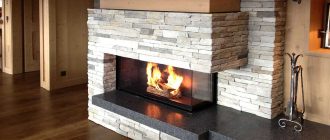One of the variants of electric heating uses radiation in the infrared range. In this range, the sun radiates its heat, and our body too. What infrared heaters to choose for the house, their characteristics in this article.
Artiklens indhold
What is infrared heating
Infrared (IR) heating acts differently from convector heating. From the radiated waves are heated objects – walls, floor, ceiling, furniture, and already from them heats the air in the room. A person who is in a room heated by infrared radiation, the heat envelops from all sides, and from the floor as well. For this reason, the comfort temperature level is reduced by a couple or three degrees, which means that the heating costs will be lower under the same conditions.
Infrared waves are divided into three ranges:
- short-wave – 0.74-2.5 microns;
- medium-wave – 2.5-50 microns;
- long-wave – 50-2 mm.
The shorter the infrared waves, the deeper they penetrate the material and cause more heating.

However, there are no miracles and only a house where heat losses are minimized will be economical. Under such conditions, of course, all heating costs will be less, including any electric heating. But with IR heating, a lower temperature is indeed required. The second reason for savings is the presence of a thermostat. If it is present, the heaters run for a short period of time when the room temperature drops below the set temperature. Otherwise, the heaters will run all the time and the room will be hot and you will have to open the windows.
Infrared heating can be used as the main heating, or as an additional heating in a particular place – near the desk, in the recreation area, etc.
Types of infrared heating and heaters
Infrared heating has many options. There are several types of heaters, some of them can be mounted on different surfaces – on the floor, ceiling and walls – creating the desired temperature and doing it zoned.

Ceiling heaters
This type of IR heater is placed exclusively on the ceiling. The heating element – tubes that emit waves in the desired range. Radiation is dissipated by means of metal scatterers, however, the flow of waves is still powerful, heating the surface is strong. In this regard, install ceiling infrared heaters are recommended not lower than at a height of 3.2 meters, but more comfortable feeling if they are at a height of about 3.6 meters.
- Standard design IR ceiling heater
- Ceiling heater with a modern look. This can already be used in the interior
- For example, like this
- Install it as part of a tiered suspended ceiling.
Not very attractive ceiling infrared heaters from an aesthetic point of view. You can fit them into the modern style, minimalism, loft and other technocratic trends. In more classic or romantic interiors it is unlikely to work.
Infrared film heaters
One of the most popular infrared heaters in recent years is a polymer film with carbon strips applied to it. The industry name is PLAN – film radiant heating element. A current is passed through the strips, under the influence of which carbon emits IR rays.
The advantage of film infrared heaters – their flexibility, so they can be mounted on almost any curved surface. Almost – because they still have a minimum bending radius. PLAN can be mounted on any surface – floor, walls or ceiling. This is very helpful if you need to heat the attic floor with sloping walls.
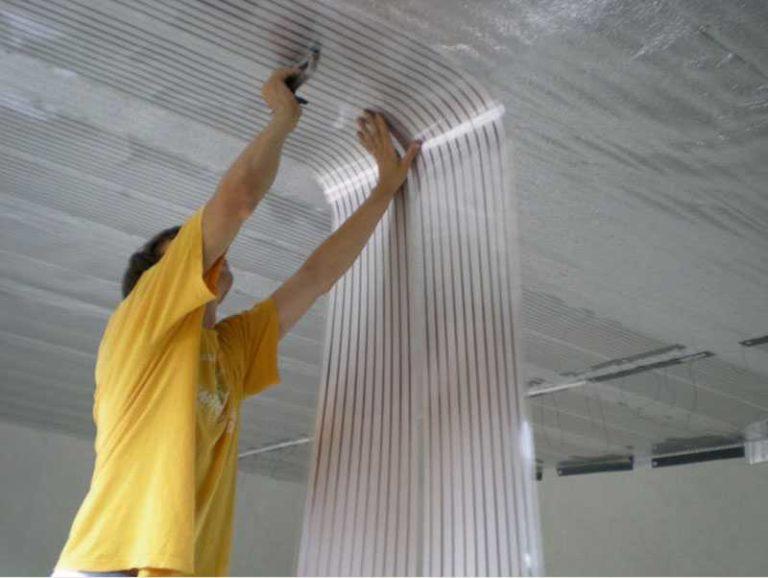
The film is attached to a flat surface. The most common material for fastening is double-sided tape. When attaching the heater to the wall or ceiling, you can additionally fix it with staples. Punching in the staples, it is necessary to hit the film, not the conductive bars. By the way, if several bars are damaged, the system remains functional – only the damaged bars are excluded from operation. But if a tire is damaged, the whole film section will not work.
The film is produced in rolls and can have different widths – from 30 cm to 100 cm. The length of the cut is chosen according to need – there are cut lines. Strips are mounted on the surface and connected by conductors, in a parallel way. The wires are connected to the thermostat, which controls the operation of the entire heating system.
This system has another component – sensor(s) that measure the condition of the air or the heating temperature of the surfaces. They are connected to the thermostat, and according to their readings, the work of the heating elements is regulated. By the way, there are models of thermoregulators with built-in sensors. Then you do not need to install anything additionally.
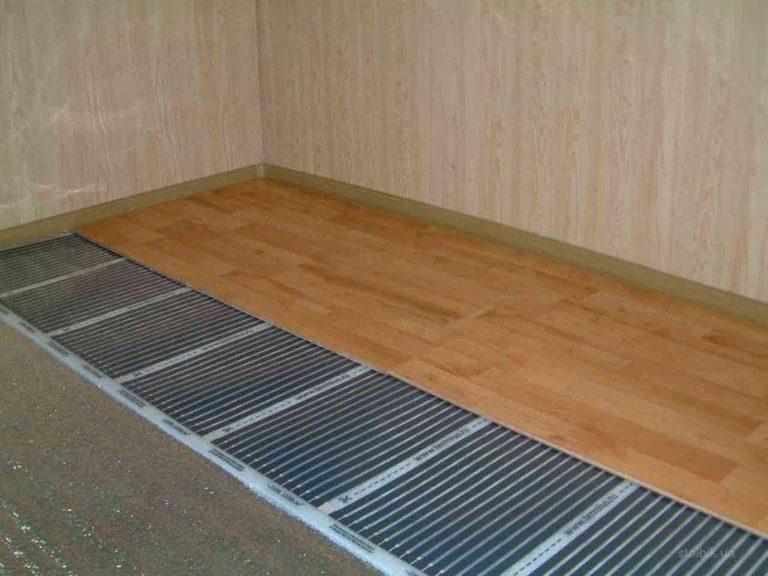
The film is installed under the finishing material. On the walls, it can be gypsum plasterboard sheets, wagons or something similar. On the ceiling, such a system can be mounted under a suspended ceiling or also cover it with wagon. There are many solutions for the floor – any flooring suitable for underfloor heating is suitable.
Wall-mounted infrared thermal panels
These infrared heaters have appeared quite recently. They represent a multilayer structure: the back wall can be made of metal with powder coating, it is attached to the heating element, for example, carbon filament. The front side is closed with a ceramic screen. Some manufacturers in this “pie” add a heat accumulator – a plate of heat-consuming material, which is heated to a certain temperature and radiates heat even after the device is turned off.
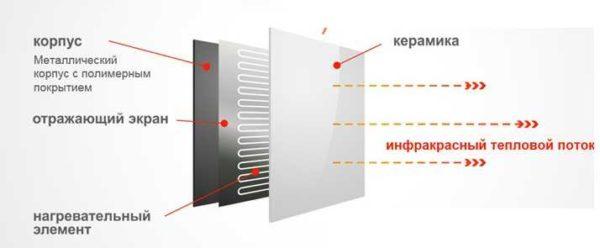
According to the method of installation, infrared heating panels are wall-mounted and ceiling-mounted. Ceiling can be installed in profiles such as “Armstrong” or fixed to the ceiling on special clamps. Wall-mounted models can be each equipped with a thermostat and an electric cord. Installation is carried out by hanging on hammered hooks. There are wall infrared panels that are combined into a single system and controlled from a single thermostat. In this case, in addition to mechanical installation, it will be necessary to assemble the electrical part.
These panels can be simply white in color, they can have a drawing on them – ordinary or in the form of photo printing. Panels with a drawing are usually hung on the wall, they serve as a decoration at the same time.
Infrared heating using skirting boards
On the same principle as the heating panels, infrared baseboard heaters are arranged. Externally, they are very similar to the usual ones, only they have a greater height and are made of ceramic. Can be installed along all walls, exterior and interior. Can be mounted on top of existing baseboards or instead of them.
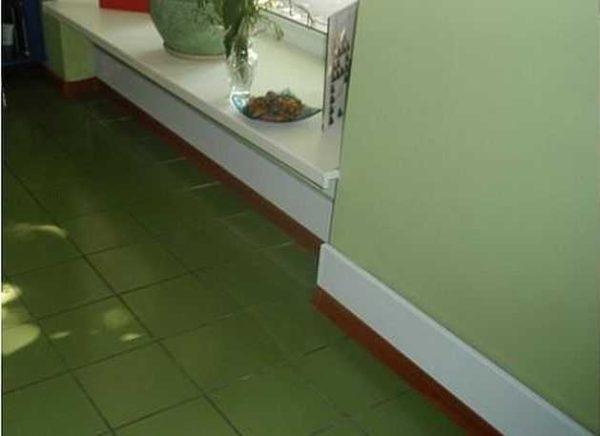
This heating is the most rational and comfortable: the wall is heated first and the air is heated from it. The heated wall mass is an excellent heat accumulator. It is able to maintain the temperature for hours even after the heaters have been switched off.
Gas infrared heaters
Not all infrared heaters are powered by electricity. There are installations that work on liquefied gas. They exist in two modifications – for indoor and outdoor use.
Liquefied gas is mixed with pressurized air, enters the chamber, where the pressure of the mixture rises. Under high pressure, the gas-air mixture falls on the ceramic burner, which is a panel with fine cells. The gas burns in these cells, causing the ceramic to heat up (up to 800 °C) and emit heat in the infrared range.

The temperature mode is regulated by means of a regulator, which is located on the burner or cylinder. Safety is guaranteed by sensors for the presence of fire, gas. There is also a device that disconnects the burner if it falls.
Such a heater can quickly heat the dacha, raise the temperature to a comfortable temperature on the terrace, in the gazebo, on some part of the yard. So infrared heating can be without electricity. Heaters of this type are also available in portable, camping version.

